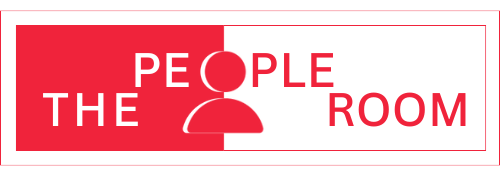The Magic of Metadata: Why This Matters
Look around and you’ll realise how rampant ‘skill gaps’ are. Not too long time ago in the real world, a fortune 500 company discovered their Python experts were actually just Excel macro enthusiasts, costing them $2 million in delayed projects. In an era when 87% of companies are feeling the pinch of skills gaps (as noted in various industry studies), HR leaders must do more than simply fill vacancies. They need to understand the full spectrum of their organization competencies to drive growth, nurture talent, and maintain competitive agility. They must connect the data with its context. By tagging skills with exact information about the skill, its level, and its relevance; you create a rich, interconnected web of knowledge.
It can create magic if you mix it with AI. If mixed with AI, this would help AI agents to access, understand, and promote skills in a way that’s both efficient and effective. AI powered ontologies auto update skills like your iPhone update, with no manual labor required. With a well structured skills ontology framework, the AI can quickly identify the employee’s current skills, compare them to the desired skills, and recommend the most relevant training. Employees can use it like a personal GPS for career development by using the AI assistant helping them find the right training program.
The Benefits: More Than Just a Pretty Map
A well-implemented skills ontology framework delivers tangible results.
Enhanced Hiring Precision: With a clear picture of the required skills for each role, job descriptions become laser focused, attracting candidates who truly fit the bill. This not only shortens the time to hire but also reduces costly wrong hires.
Targeted Learning and Development: Employees gain clarity on the skills they need to develop for future roles. Personalized training plans and career development pathways lead to higher engagement and retention.
Optimized Internal Mobility: By mapping out internal competencies, organizations can identify hidden talents and promote from within, preserving institutional knowledge and reducing recruitment costs.
Data Driven Workforce Planning: Anticipate future skill requirements and strategically align your talent initiatives with business goals. Its like having a GPS for your workforce guiding you through even the most complex organizational changes.
Practical Steps: Implementing a Skills Ontology Framework
Developing a robust skills ontology takes time and you may want one dedicated resource to work on it for 2 to 3 months, depending on the kind and size of your organisation. It is a bit like assembling a jigsaw puzzle where the pieces are constantly evolving. Here is a step by step blueprint and practical steps:
Assess Your Current State and define your Objective: Take stock of your organization’s existing skills and knowledge. What do you have? What’s missing? Start by asking, what problem we are trying to solve? Start with pain points like what’s bleeding you dry? Is it attrition? Slow hiring? Whether you want to enhance you talent acquisition, foster internal mobility, or design continuous learning programs, your goals will shape the ontology’s scope.
Gather and Organize Data: Use multiple sources such as job descriptions, performance reviews, and employee self assessments to gather data about skills. Engaging with stakeholders early on is crucial to understand the skills that would take your orgnisation to the next level. Treat skills like stock portfolios, invest in what’s trending, divest what’s dying. After all, measure twice cut once, is as true in HR as in carpentry.
Map Skill Relationships: This is the MOST IMPORTANT step. Figure out the ‘how’ and ‘why’ behind each skill. Connect foundational skills to advanced competencies, and map them to specific roles and departments. This interconnection is the secret sauce that transforms a simple list into a strategic asset.
Define Your Framework: Create a structured system that categorizes skills logically. Think about different levels of proficiency and the context in which each skill is used.
i. Engage Your Team: HR processes are not built in a lab. Involve employees in the process as their input can provide valuable insights and foster a sense of ownership.
ii. Leverage on Existing Frameworks and Technology: There are existing frwameworks that you can leverage on. For example, companies based in EU can look upto ESCO, and the ones in the US can refer to ONET. You can also check out AI Semantic Matching if your goal is rapid scaling. Modern HR technology can automate the heavy lifting. Use AI and machine learning tools to analyze and promote skills. It can help identify new skills emerging in the market, update relationships in real time, and even suggest career pathways for employees. But remember, technology is just a tool, not a replacement for human judgment. And while you are depending on it, use your experience and wisdom to verify AI’s work.
Integrate and Iterate: Finally, make sure your skills ontology plays well with your existing HR systems such as the ATS, LMS, or performance management platform. This integration of the skills ontology framework is important for them to ‘start talking with each other and make great recipes out of the ingredients that they have in form of data’. And remember, the journey doesnt end at launch. Regular updates and continuous feedback are essential to keep your framework relevant.
Measure Progress: Track metrics like ‘Time-to-fill roles’ (depending on location it can be <15 to <90 days), ‘Internal mobility rate’ (+20% YoY is a great number), ‘Skill gap closure’ ( try for 90% in 12 months)
Celebrate Progress: Recognize and celebrate skill development. Whether it’s through formal recognition programs or simple shout-outs, make sure to acknowledge the hard work; specially of the lad who worked on setting up the skills ontology framework for 3 months 🙂
The Human Touch: Empathy in Skill Development
While technology is a powerful tool, we must not forget the human element. Skills ontology frameworks are not just about data points; they’re about people. Each skill represents a person’s hard work, dedication, and potential. As HR professionals, our job is to nurture that potential, not just track it.
Consider the story of Suzanne, a mid level manager who dreams of moving into a leadership role. With a skills ontology framework, Suzanne’s organization can identify the specific skills she needs to develop and provide targeted training. But it doesn’t stop there. By pairing data with empathy, HR can also offer mentorship, coaching, and a supportive environment. It’s about creating a culture where skills are celebrated, and growth is encouraged.
The Fun Factor: Making Skill Development Engaging
Most of us would agree that often skill development feels like a chore. At times, we are sick of the number of reminders we get from our L&D team on the course that must be completed on the web. But it doesn’t have to be like that forever. Consider gamifying the process. Using gamification, organizations can make skill development fun and engaging. Use a platform where employees earn badges for mastering new skills, compete in friendly challenges, and see their progress in real time. It’s like turning career development into a game of Pokemon, catch ’em all!
A Glimpse Into the Future
Looking ahead, skills ontology frameworks will be even more integral to a skills based organization. As AI and machine learning become more sophisticated, these frameworks will continuously evolve, providing real-time insights that enable rapid adaptation to market changes. For HR professionals, this means staying ahead of the curve, ensuring that your organization isnt just surviving but thriving in an era defined by digital transformation and constant innovation.
Final Words: The Power of Skills Ontology Frameworks
In the end, skills ontology frameworks are more than just a buzzword. They’re a powerful tool that can transform how organizations approach talent development. By creating a structured, dynamic map of skills, we can unlock the full potential of our workforce. And in a world where change is the only constant, having a robust skills ontology framework is like having a compass in a storm. It guides us toward a future where every employee can thrive, and every organization can succeed.
So, let’s embrace the power of skills ontology frameworks. Let’s make skill development engaging, empathetic, and effective. Because in the game of work, having the right skills is the ultimate winning strategy.



